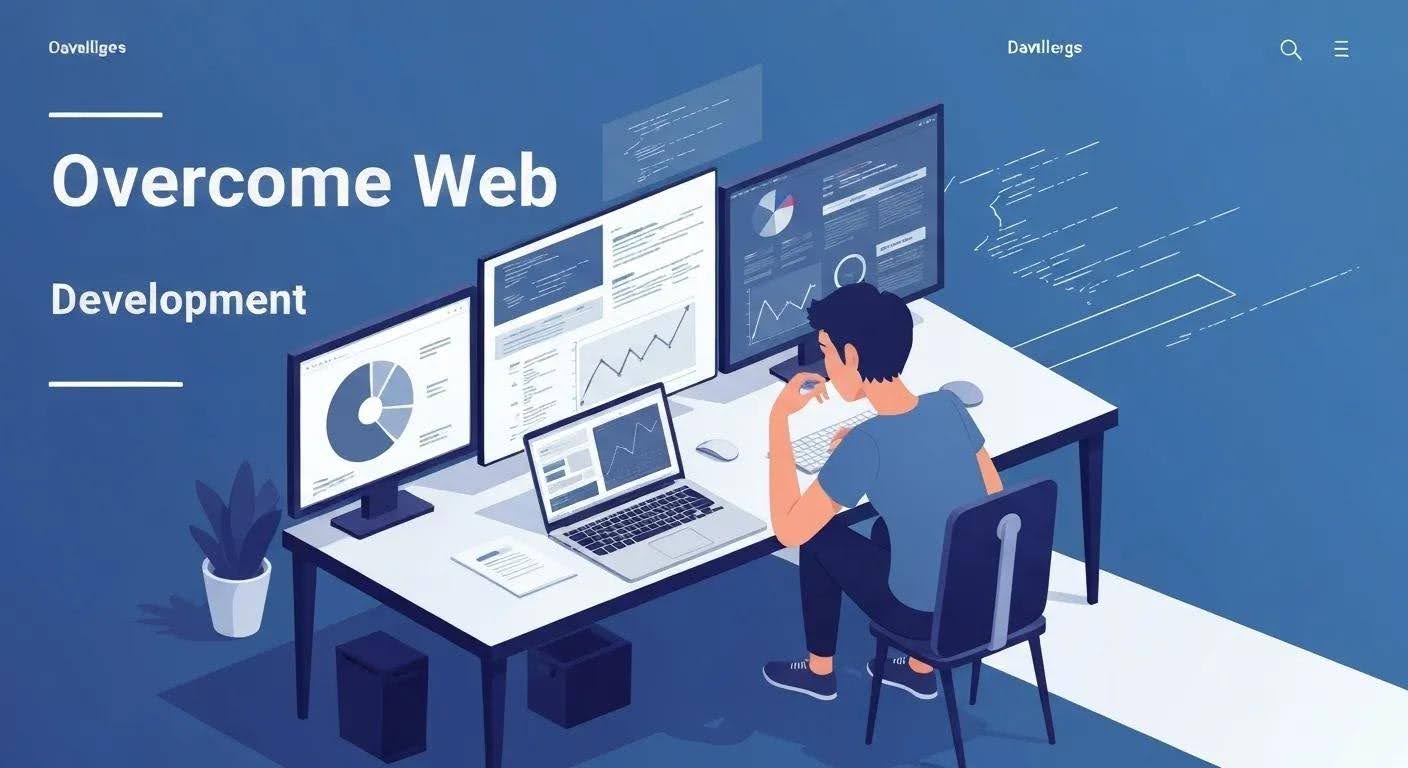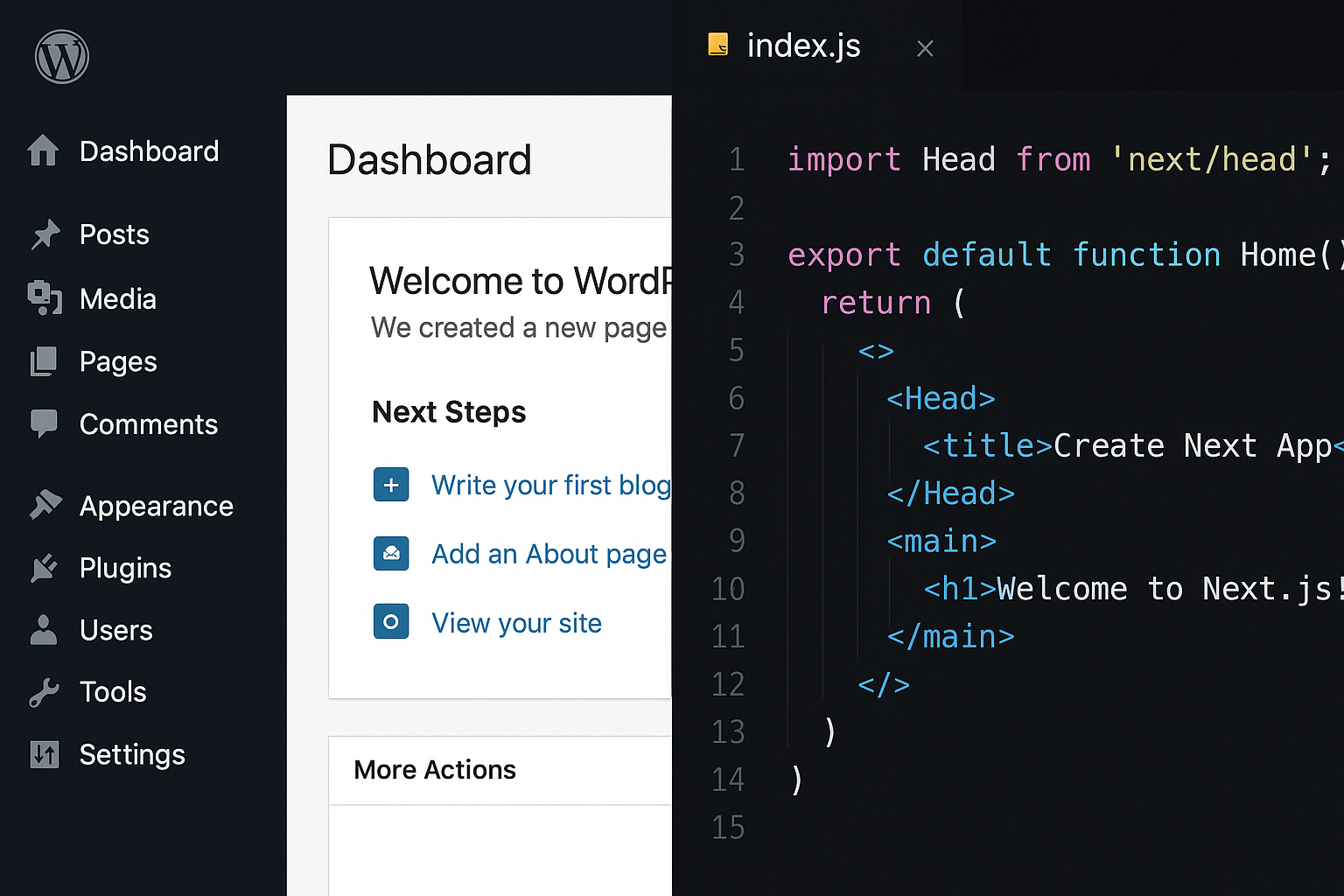
Top 5 Common Issues to Expect in Any Web Development Project Success: How to Identify and Prevent Web Project Challenges
Web development projects fail at alarming rates—nearly half miss deadlines or budgets—because of predictable pitfalls. By understanding the top five common issues that can arise during a web development project, you gain the clarity to set precise requirements, streamline communication, and enforce quality controls. This guide examines scope creep, budget overruns, communication breakdowns, QA shortcomings, and post-launch risks. You'll discover early warning signs, proven mitigation strategies, and how bkthemes.design's comprehensive web development and SEO services reinforce each best practice to deliver projects on time, on budget, and with lasting performance.
What Is Scope Creep and How Does It Impact Web Development Projects?
Scope creep is the uncontrolled expansion of project requirements beyond the original objectives, which extends timelines, inflates costs, and dilutes focus. When new features are added without revising the plan, teams spend extra effort on unplanned tasks rather than core deliverables. For example, incorporating additional design revisions late in development often delays launch dates by weeks and pressures budgets.
The Impact of Scope Creep on Project Success: An Empirical Investigation
This empirical study investigates the factors contributing to scope creep and their negative correlation with software project success. It concludes that scope creep often leads to compromised quality, delayed schedules, increased costs, and reduced customer satisfaction, underscoring the necessity for robust control and mitigation strategies.
This research directly supports the article's discussion on how uncontrolled expansion of project requirements (scope creep) negatively impacts project timelines, budgets, and overall success in web development.
What Causes Scope Creep in Web Development Projects?
Scope creep stems from misaligned expectations, evolving requirements, and informal change requests. Common root causes include: request new
- Vague initial specifications that invite interpretation drift
- Stakeholder feedback loops that add features mid-stream
- Absence of formal change-control policies
- Pressure to compete with feature-rich competitor sites
These factors often compound, leading directly into how to catch scope creep early.
How Can You Identify Early Signs of Scope Creep?
Before costs skyrocket, watch for these key indicators:
| Warning Sign | Indicator | Consequence |
|---|---|---|
| Repeated Feature Add-Ons | Last-minute requests surface in status calls | Timeline slips by days or weeks |
| Extended Feedback Rounds | Multiple design review cycles exceed planned | Budget buffers are consumed faster |
| Untracked Change Requests | Feedback via informal channels (chat/email) | Team spends time on undocumented work |
| Rising Work-in-Progress | Backlog grows without sprint adjustments | Core features stall or degrade |
Monitoring these signals lets you apply targeted controls before deadlines shift.
What Strategies Prevent and Control Scope Creep Effectively?
Preventing scope creep relies on proactive governance:
- Define and document detailed requirements before kickoff.
- Establish a formal change-control process with approval gates.
- Prioritize feature sets in a shared backlog.
- Schedule regular stakeholder reviews to align expectations.
- Lock down deliverables with sign-off milestones.
Enforcing these steps fosters accountability and keeps the project on its original course.
How Does Clear Requirements Gathering Reduce Scope Creep Risks?
Comprehensive requirements gathering aligns stakeholders on project goals, user stories, and acceptance criteria. By mapping every feature to a business objective, teams avoid ambiguous or redundant requests. An investment in detailed workshops and mock-ups reduces interpretation gaps and creates a baseline that change requests must justify against, preventing scope from ballooning.
How Does bkthemes.design Address Scope Creep in Client Projects?
At bkthemes.design, we integrate collaborative discovery sessions, robust documentation, and a transparent change-control framework. Our structured approach ensures every request is assessed for impact, cost, and timeline, and only approved changes proceed through an official scope revision. This methodology keeps development focused and clients informed at every step, eliminating surprises and preserving launch targets.
How to Prevent Budget Overruns in Web Development Projects?
Budget overruns occur when project costs exceed estimates due to under-scoping, hidden requirements, or uncontrolled changes. Inaccurate cost forecasts leave teams scrambling for resources, and unplanned features rapidly consume contingency funds. A disciplined budgeting framework preserves ROI by matching financial planning to actual deliverables .
What Are the Common Causes of Budget Overruns?
Budget issues often originate from:
- Incomplete cost estimations that ignore testing or maintenance
- Scope changes introduced without budget realignment
- Poor resource allocation and misjudged effort estimates
- Unanticipated third-party licensing or integration fees
Identifying these creators of cost inflation is the first step toward control/) .
How Do Budget Overruns Affect Project Success and ROI?
When expenses climb beyond the approved budget, organizations face delayed revenue recognition, strained cash flow, and reduced profitability. Overruns can force feature cuts, degrade quality, or halt deployment entirely. Maintaining strict budget discipline ensures projects deliver expected business value without financial strain.
What Best Practices Ensure Accurate Budget Planning and Control?
A robust budget management system incorporates:
- Detailed work-breakdown structures with time-and-cost estimates
- Transparent contingency reserves for risk-based scenarios
- Periodic budget reviews aligned with sprint cycles
- Clear cost-tracking dashboards accessible to stakeholders
These measures enable real-time visibility into expenses and reinforce accountability.
Which Tools Help Monitor and Manage Web Project Budgets?
Effective budget oversight relies on software that tracks time, resources, and costs:
| Tool | Category | Purpose |
|---|---|---|
| Harvest | Time Tracking | Captures billable hours and budgets |
| Jira + Tempo | Resource Planning | Integrates estimates with issues |
| Microsoft Project | Scheduling | Visualizes cost-loaded workstreams |
| QuickBooks | Accounting | Syncs invoices and project finances |
Implementing these solutions streamlines financial tracking and prevents surprises.
How Does bkthemes.design Help Clients Avoid Cost Overruns?
Our team combines precise effort estimation with agile cost control. We co-develop budgets in discovery, assign clear cost codes to every feature, and deliver weekly budget reports. This transparency empowers clients to make informed trade-offs and maintain expenses within agreed limits.
Why Is Clear Communication Critical in Web Development Projects?
Clear communication bridges the gap between client expectations and development deliverables, reducing misunderstandings and rework. When teams share progress transparently, feedback loops tighten and issues surface before they turn into costly delays. Consistent dialogue builds trust and propels projects toward timely completion .
A Case Study on Causes & Effects of Communication Gaps in Large-Scale Software Development
This explanatory case study identifies significant communication gaps within large-scale software development projects, particularly those affecting requirements. It highlights that these gaps can result in a failure to meet customer expectations, lead to quality issues, and cause wasted effort, emphasizing the critical role of clear communication between all project stakeholders.
This study reinforces the article's point that clear and consistent communication is fundamental in web development projects to prevent misunderstandings, reduce rework, and ensure timely and successful project completion.
What Are the Common Communication Breakdowns in Web Projects?
Projects stumble when:
- Requirements are conveyed only in informal channels
- Updates occur sporadically without a defined cadence
- Feedback from stakeholders is unstructured or contradictory
- Assumptions replace documented agreements
These breakdowns lead teams to build the wrong features or interpret goals inconsistently, undermining success.
How Can Effective Client-Developer Communication Improve Outcomes?
Transparent updates, structured demos, and open feedback channels foster shared ownership of project goals. Regular status meetings, collaborative design reviews, and accessible project boards ensure everyone sees progress, prioritizes correctly, and resolves questions in real time—driving efficiency and satisfaction .
What Communication Channels and Plans Work Best for Web Projects?
A balanced communication plan includes:
- Weekly stand-up calls to review sprint achievements
- Centralized project boards (e.g., Trello, Jira) for visible tasks
- Document repositories for requirement artifacts
- Scheduled design walkthroughs with annotated prototypes
This multi-channel approach delivers clarity while adapting to stakeholder preferences.
How Does bkthemes.design Foster Clear Communication Throughout Projects?
At bkthemes.design, we assign dedicated project managers who maintain a project hub with live updates, run structured review sessions, and circulate concise executive summaries. By standardizing communication cadences, we eliminate confusion and keep every stakeholder aligned on priorities and progress.
How Does Quality Assurance and Testing Ensure Web Project Success?
Quality assurance (QA) encompasses comprehensive testing processes—unit, integration, performance, and user acceptance testing (UAT)—that validate functionality, catch defects early, and confirm the product meets requirements. A rigorous QA regimen prevents post-launch issues and safeguards user experience, maintaining brand trust.
What Are the Key QA Processes in Web Development?
Effective QA unfolds in stages:
- Unit Testing – Verifies individual components in isolation.
- Integration Testing – Ensures modules work together seamlessly.
- Performance Testing – Measures load times and scalability under stress.
- User Acceptance Testing (UAT) – Confirms real-world requirements are met.
How Can Early Testing Prevent Costly Post-Launch Issues?
Detecting defects during development reduces rework, avoids emergency hotfixes, and prevents downtime that alienates users. Early testing limits technical debt, accelerates feature delivery, and ensures a stable launch, safeguarding both budget and reputation .
What Tools and Techniques Support Effective Web Testing?
Below is a selection of leading QA tools:
| Tool | Type | Use Case |
|---|---|---|
| Selenium | Automated Testing | Browser regression and cross-browser checks |
| JMeter | Load Testing | Simulates high-traffic and stress tests |
| Postman | API Testing | Validates RESTful endpoints and contracts |
| BrowserStack | Compatibility | Tests real devices and OS combinations |
Integrating these tools creates a multi-layered test suite that assures quality across environments/) .
How Does bkthemes.design Implement QA to Deliver Flawless Functionality?
Our QA workflow embeds test automation from day one, pairing developers with QA engineers to write tests alongside code. We maintain a continuous integration pipeline that runs full test suites on each commit, complemented by manual UAT sessions engaging real users to validate business logic and usability.
What Post-Launch Issues Threaten Long-Term Web Performance and Security?
After launch, websites face evolving risks—outdated code, growing traffic demands, and emerging vulnerabilities. Without proactive maintenance and optimization , performance degrades, security gaps widen, and user engagement falters, compromising ROI and brand credibility.
Why Is Ongoing Website Maintenance Essential After Launch?
Regular maintenance updates frameworks, patches security libraries, and refines configurations to match growing traffic. Continuous monitoring of uptime, error rates, and analytics ensures issues are resolved before they impact users, preserving site integrity and business continuity .
Website Security Is Maintenance: Here's Why It Matters
This article asserts that website security is an ongoing, continuous process rather than a one-time implementation. It explains that security risks evolve post-launch as a site interacts with users and faces potential malicious activities, advocating for the integration of security protocols into all aspects of website maintenance, from initial design to continuous monitoring.
This source directly supports the article's section on post-launch risks, particularly the critical need for continuous maintenance and proactive security measures to protect against emerging vulnerabilities and ensure long-term website performance and integrity.
What Are the Most Common Security Risks in Web Projects?
Websites often encounter:
- Unpatched software vulnerabilities (e.g., outdated CMS plugins)
- Weak authentication mechanisms and exposed credentials
- Insecure data transmission without proper SSL/TLS enforcement
- Insufficient input validation leading to injection attacks
Addressing these risks through routine audits and patch management shields sites from breaches .
How Can Performance Optimization Improve User Experience Over Time?
Ongoing performance tuning—caching, image compression, code minification, and load-balancing—accelerates page loads and reduces server strain.
Monitoring Core Web Vitals guides enhancements that boost engagement, lower bounce rates, and reinforce SEO rankings .
How Does bkthemes.design Support Post-Launch Security and Performance?
We deliver managed hosting with automated patching, 24/7 monitoring, and monthly performance reviews. Our team implements CDN acceleration, vulnerability scans, and database optimizations. By combining security hardening with performance engineering, we keep client sites fast, safe, and reliable .
How Do Poor Requirements Gathering and Project Planning Lead to Web Development Failures?
Inadequate requirements definition creates misaligned expectations, rework, and missed objectives. When project planning lacks precision—without clear user stories, acceptance criteria, or risk assessments—teams waste time on unapproved tasks and overlook critical dependencies, jeopardizing success .
What Are the Risks of Inadequate Requirements Definition?
- Scope ambiguity that invites contradictory interpretations
- Unidentified technical constraints that block implementation
- Hidden dependencies that surface late in development
- Stakeholder misalignment leading to repeated revisions
These risks inflate schedules and costs, undermining trust and project viability.
How Can Thorough Requirements Gathering Prevent Common Issues?
Structured workshops, stakeholder interviews, and prototype validations capture complete business and user needs.
Documenting user journeys, edge cases, and performance criteria transforms abstract goals into actionable tasks, reducing assumptions and guiding development .
What Role Does Change Control Play in Managing Project Scope?
A formal change-control process logs requests, assesses impact on schedule and budget, and secures approvals before implementation. By treating change as a controlled workflow rather than an ad hoc request, teams preserve project integrity and avoid drifting objectives.
What Are the Key Risks and Mistakes to Avoid for Successful Web Project Management?
Successful project management demands anticipating and mitigating multiple risk vectors. Overlooking any aspect—from technical feasibility to stakeholder alignment—opens the door to failure. Understanding the most common pits empowers teams to adopt a holistic prevention strategy .
Why Do Web Development Projects Fail and How Can You Avoid It?
Projects fail due to poor planning, unclear scope, inadequate testing, and breakdowns in communication. Avoid these failures by combining rigorous requirement workshops, transparent status updates, iterative testing, and contingency planning to keep goals in sight and risks in check.
How Can Proactive Risk Mitigation Improve Project Outcomes?
By conducting risk assessments at each phase—identifying likelihood, impact, and response strategies—teams prioritize high-impact issues before they materialize. Embedding risk reviews in sprint retrospectives ensures continuous adjustments and fosters a culture of resilience.
What Are the Best Practices for Managing Web Development Project Success?
- Define clear objectives and success metrics with stakeholders.
- Implement agile workflows with regular demos and feedback.
- Maintain a living risk register and budget forecast.
- Enforce rigorous QA and user acceptance testing.
- Plan for post-launch maintenance, performance tuning, and security updates.
Effective web development hinges on disciplined scope control, accurate budgeting, open communication, thorough testing, and proactive maintenance. By applying these strategies—and leveraging specialized services from bkthemes.design —you ensure each project delivers on time, on budget, and meets user expectations with robust performance and security.
Table of Contents
📧 Stay Updated
Get the latest web development tips and insights delivered to your inbox.




